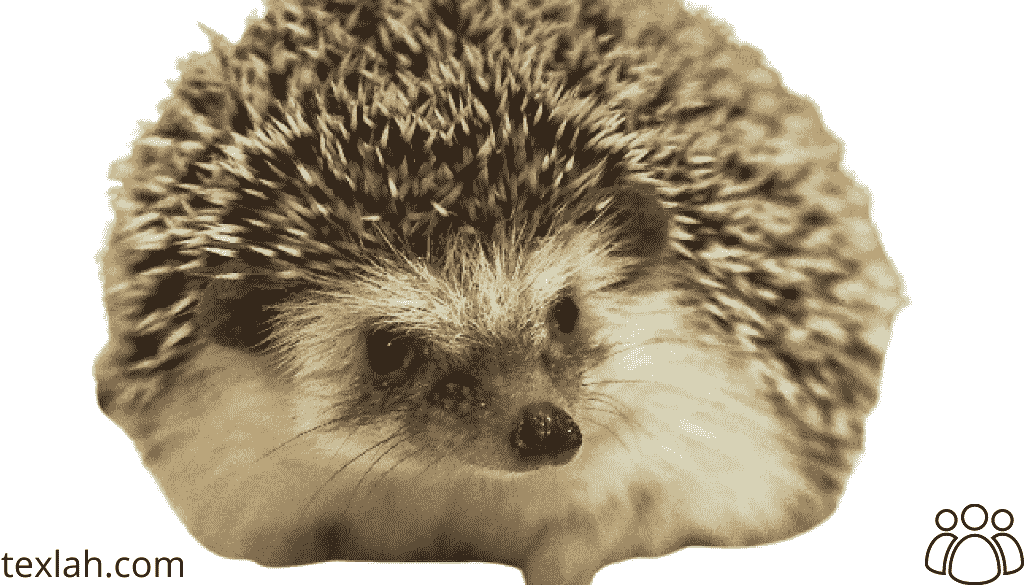Navigating the realm of porcupines involves a delicate balance of comprehending their behavior and deciphering the language of their iconic quills. Despite their prickly appearance, porcupines tend to be shy and non-aggressive, opting to climb trees or seek refuge in dens when sensing threats. A successful interaction hinges on respecting their space, requiring patience in approach. Decoding the quill language is vital for a safe and respectful encounter. Embracing the educational facet of this wildlife experience allows individuals to connect the ecological significance of porcupines, advocating for their conservation through observing behavior, understanding quill functionality, and actively participating in habitat preservation efforts. Thus, the question of How to Hug a Porcupine comes in.
In the enchanting realm of wildlife encounters, porcupines stand out as captivating creatures, sparking both curiosity and a touch of trepidation. This guide alleviates concerns by providing insights into safely embracing these spiky marvels. From understanding porcupine behavior to unraveling the nuances of quill dynamics, this journey offers an educational and heartwarming roadmap for those seeking an encounter these intriguing animals.
Read More: Do Hyenas Eat Lions?
Where do Porcupines live?
Porcupines are adaptable creatures found in various habitats across North and South America, Europe, Asia, and Africa. In North America, they inhabit coniferous and deciduous forests, adapting well to mountainous regions. European porcupines reside in wooded areas and rocky terrains. In Africa, they are prevalent in diverse landscapes, from savannas to forests. Porcupines are also found in Asian forests and grasslands. Their ability to thrive in different environments reflects their ecological resilience. These nocturnal creatures create dens in hollow trees, rock crevices, or burrows for shelter, providing a secure retreat during daylight hours. Understanding the broad geographical range and habitat preferences of porcupines contributes to effective wildlife conservation strategies.
Unraveling Porcupine Behavior: How to Hug a Porcupine
Before attempting a porcupine hug, it’s crucial to comprehend the behavior of these prickly creatures. Porcupines are generally shy and non-aggressive, preferring to climb trees or seek refuge in dens when feeling threatened. Observing their natural tendencies sets the stage for a harmonious interaction, laying the foundation for a memorable and safe encounter.
Decoding the Quill Language
The iconic feature of porcupines is, undoubtedly, their quills. Understanding the purpose of these quills and how they function is paramount. Contrary to popular belief, porcupines cannot shoot their quills but have them loosely attached to their bodies. Learning how to approach and touch a porcupine out causing harm involves deciphering the language of their quills, ensuring a respectful and injury-free interaction.
Approaching Caution
Approaching a porcupine for a hug requires patience and caution. While they may seem docile, respecting their space is crucial. Slow movements, gentle gestures, and allowing the porcupine to initiate contact contribute to a positive experience. This section provides practical tips on minimizing stress for both you and the porcupine during the encounter.
Embracing the Educational Experience
Hugging a porcupine goes beyond the physical act; it’s an opportunity to connect the fascinating world of these creatures. This section delves into the ecological importance of porcupines, their role in the ecosystem, and the conservation efforts aimed at preserving their habitats. By embracing a porcupine, you become a steward of their story and an advocate for their well-being.
What do Porcupines Eat?
Porcupines are herbivores a diverse diet. Their primary food includes bark, leaves, twigs, and plant buds. Rich in cellulose, these items help wear down their continuously growing incisors. Porcupines also consume fruits, berries, and nuts, showcasing dietary adaptability. In winter, they may target coniferous trees for sustenance. Despite their herbivorous nature, porcupines occasionally gnaw on bones or antlers for minerals. Understanding the varied dietary habits of porcupines contributes to wildlife appreciation and aids in habitat conservation efforts.
Conclusion: How to Hug a Porcupine
In conclusion, the idea of hugging a porcupine transforms from a whimsical notion to a thoughtful and informed experience through this comprehensive guide. Navigate the world of quills, behavior, and conservation confidence, as you embark on an adventure that bridges the gap between humans and one of nature’s most intriguing creatures.
Frequently Asked Questions
- Can porcupines shoot their quills?
No, porcupines cannot shoot their quills. Contrary to a common myth, porcupines have a passive defense mechanism. When threatened, they raise their quills, making them appear more formidable. If an attacker makes physical contact, the loosely attached quills may detach, embedding themselves in the intruder. However, porcupines do not have the ability to shoot quills as a targeted defense strategy. This distinction is essential in dispelling misconceptions about porcupine behavior and understanding their unique means of protection in the wild.
Discover in-depth and reliable information on Texlah, your go-to platform for insightful content.

